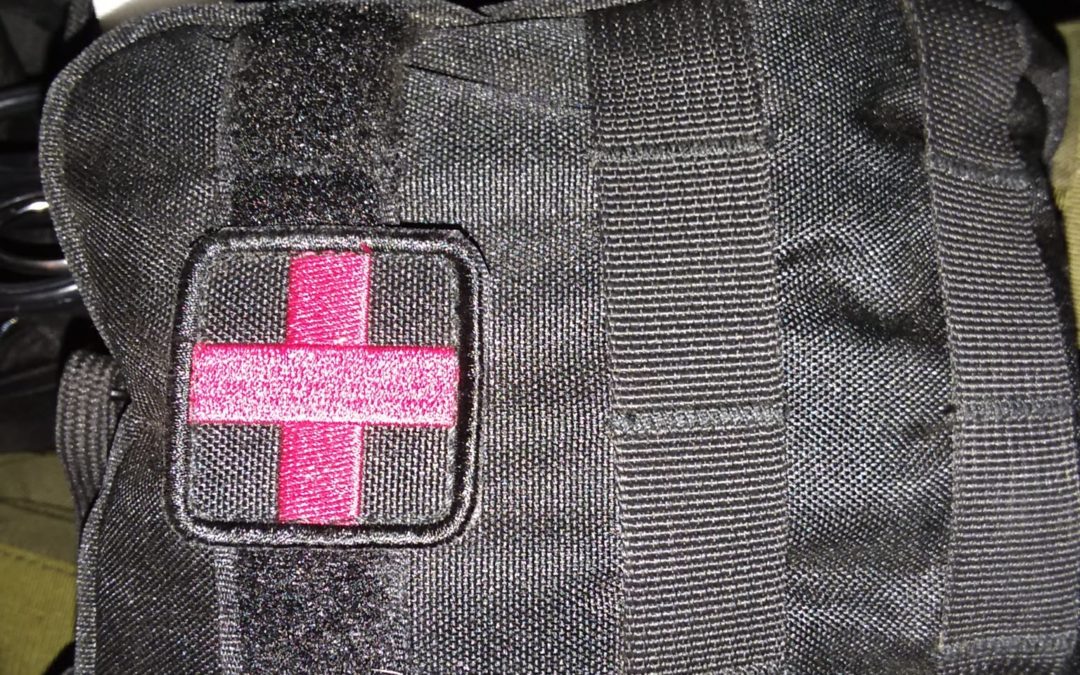If you have taken any of our lifesaving courses, or any trauma care courses for that matter, you have seen and hopefully learned how to use some important lifesaving tools. If you follow our definition of logistics readiness you are probably concerned with what equipment you should have and what equipment you shouldn’t have. Have no fear! I am here to aid you in your gear buying frenzy with this guide to equipment for a basic trauma care kit. We teach triage based on the MARCH algorithm so we will discuss equipment also based on the MARCH algorithm.
Massive Hemorrhaging:
At the moment the go-to treatment for arterial bleeds in the extremities is a tourniquet. One of the most popular tourniquet at the moment is a CAT tourniquet, this tourniquet is being used by the US Military here are two options for CAT tourniquets
Some people prefer the SOFTT-W. If this is your cup of tea, here is a link to a quality SOFTT-W created by TacMed Solutions
This is a great downloadable resource for more information about tourniquets.
You may come across a casualty where a tourniquet just won’t work. For example, if the hemorrhaging is in the pelvic area or the shoulder you may need to pack the wound, while you can wound pack with just gauze, I highly recommend using gauze with a hemostatic agent embedded in the gauze. Some examples that we recommend is QuikClot and Celox gauze. I recommend have one or two packages of hemostatic agent gauze.
If you are interested in reading more about hemostatic agents, please reference this link
The final thing that you will want to have for massive hemorrhaging is some sort of pressure dressing. We teach how to create a pressure dressing out of Israeli Bandages, it is recommended that you have at least one Israeli Bandage in your FAK
For the history behind the Israeli bandage reference this link.
Airway:
The next step in the triage algorithm is to address the casualty’s airway. There are two tools we will use to create an opening in the airway. The first is the Nasopharyngeal Airway (NPA), the second is the Oropharyngeal Airway (OPA). I prefer to use an NPA, this is because they pack smaller into a FAK. Remember each person will need a different size NPA/OPA so I recommend purchasing and carrying a set of them in all different sizes.
For more information on NPA and OPA refer to this link
Respiratory:
One of the biggest issues in triage after clearing the airway could be a sucking chest wound, the most important piece of equipment to address in impalement to the chest is a chest seal, also known as an occlusive dressing
Circulatory
This is ensuring that the casualties heart is still beating. This could be as simple as having a MICR instruction card in your IFAK for someone who does not know how to administer MICR or CPR.
Head injury, Hypothermia, Shock
The biggest goal here is to stabilize the head and neck and treat for shock and hypothermia. Shock and hypothermia are treated in a similar way. Get the casualty off of the ground and wrap them in a blanket. Space blankets are a great option, they do not require a lot of space and they are disposable.
This concludes our short list for supplies to stock your IFAK. If you want to learn how to use all of these items, sign up for soonest our lifesaving lvl 1 course.


Thank you for posting the list. The WLT emergency care course was well worth taking. Despite having had extensive emergency care training, and also having taught it –long ago, I was pleased to learn a significant amount of new information in the WLT class. I would only add two items to this IFAK short list.
Trauma shears are absolutely indispensable for exposing a wound rapidly and removing blood-soaked or otherwise wet clothing to manage for shock and hypothermia, without doing harm to a suspected injured spine. Unlike some other emergency supplies, trauma shears are difficult to improvise. I am pleased they were included in the example individual first aid kit (IFAK) presented in the class. I pack my own IFAK with the trauma shears located immediately behind the personal protective equipment.
A laminated MARCH checklist would be handy for the same reasons given for including the MICR checklist. Even though a rescuer feels comfortable with their skills in a practice situation, the brain functions differently (sometimes worse) under high anxiety. A brief checklist might help the rescuer maintain a calmer mental focus in an extreme stress situation such as the rescuer administering emergency trauma care when their own life is in imminent danger and there is no 9-1-1 service for whatever reason.